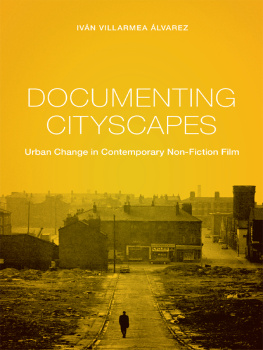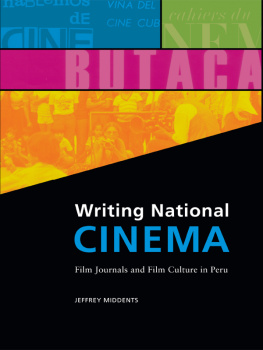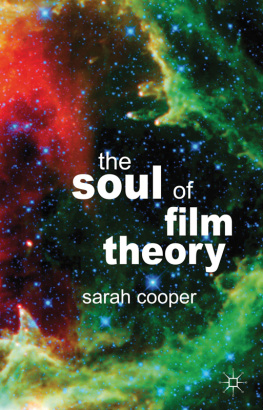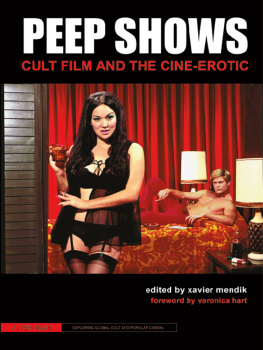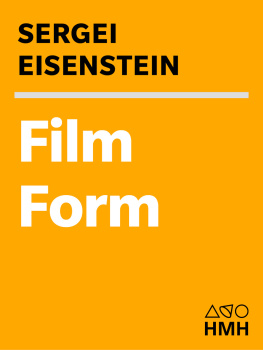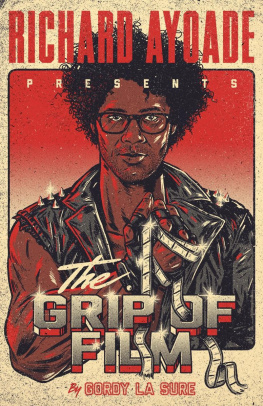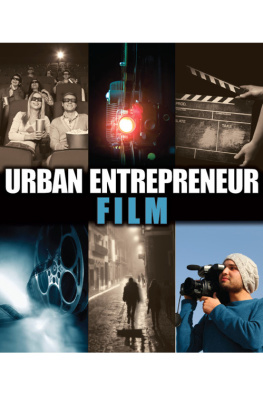DOCUMENTING CITYSCAPES
Nonfictions is dedicated to expanding and deepening the range of contemporary documentary studies. It aims to engage in the theoretical conversation about documentaries, open new areas of scholarship, and recover lost or marginalised histories.
Other titles in the Nonfictions series:
Direct Cinema: Observational Documentary and the Politics of the Sixties
by Dave Saunders
Projecting Migration: Transcultural Documentary Practice
edited by Alan Grossman and Aine OBrien
The Image and the Witness: Trauma, Memory and Visual Culture
edited by Frances Guerin and Roger Hallas
Films of Fact: A History of Science in Documentary Films and Television
by Timothy Boon
Building Bridges: The Cinema of Jean Rouch
edited by Joram ten Brink
Vision On: Film, Television and the Arts in Britain
by John Wyver
Chavez: The Revolution Will Not Be Televised A Case Study of Politics and the Media
by Rod Stoneman
Documentary Display: Re-Viewing Nonfiction Film and Video
by Keith Beattie
The Personal Camera: Subjective Cinema and the Essay Film
by Laura Rascaroli
The Cinema of Me: The Self and Subjectivity in First Person Documentary
by Alisa Lebow
Killer Images: Documentary Film, Memory and the Performance of Violence
edited by Joram ten Brink and Joshua Oppenheimer
Documents of Utopia: The Politics of Experimental Documentary
by Paolo Magagnoli
IVN VILLARMEA LVAREZ
DOCUMENTING CITYSCAPES
Urban Change in Contemporary Non-Fiction Film
A Wallflower Press Book
Published by
Columbia University Press
Publishers Since 1893
New York Chichester, West Sussex
cup.columbia.edu
Copyright Columbia University Press 2015
All rights reserved.
E-ISBN 978-0-231-85078-0
Wallflower Press is a registered trademark of Columbia University Press
A Columbia University Press E-book.
CUP would be pleased to hear about your reading experience with this e-book at .
Cover image: Of Time and the City (2008) Hurricane Films
A complete CIP record is available from the Library of Congress
ISBN 978-0-231-17452-7 (cloth : alk. paper)
ISBN 978-0-231-17453-4 (pbk. : alk. paper)
ISBN 978-0-231-85078-0 (e-book)
TABLE OF CONTENTS
The entire research and writing process of this book lasted six long years, from 2008 to 2014, during which I met many people who have helped me in many ways. The starting point of this story was my arrival at the English Department of the Universidad de Zaragoza with a FPI grant from the Spanish Ministry of Science and Research (BES-2008-007953) associated to the Research Project HUM2007-61183. There I had the pleasure of meeting the members of the research group Cinema, Culture and Society, as well as other postgraduate students, who soon became friends and colleagues. I would like to thank all of them for supporting me during these years, especially my supervisor Luis Miguel Garca Mainar, who has been an excellent editor of all the texts that make up this book.
There have been many other people who have somehow contributed to bringing this research to a successful conclusion: some have invited me to give lectures, take part in conferences or publish in academic books and journals; while others have given me access to archives, libraries and schools, have read and corrected my papers, have lent me films, or simply have given me ideas. For all these reasons, I would like to mention Sorin Alexandrescu, Marta lvarez, Ana Maria Amaro, Thom Andersen, Steve Anker, Elvira Antn Carrillo, Tiago Baptista, Mara Solia Barreiro, Charlotte Brunsdon, Josep Mara Caparrs Lera, Josetxo Cerdn Los Arcos, Michael Chanan, Efrn Cuevas, Paulo Cunha, Eva Darias Beautell, Max Doppelbauer, Susana Duarte, Justin D. Edwards, Dino Everett, Angelica Fenner, Georges Fournier, Paulo Granja, Hanna Hatzmann, ngel Luis Hueso, scar Iglesias lvarez, Alisa Lebow, Margarita Ledo Andin, Delphine Letort, Asuncin Lpez-Varela, Laura Montero Plata, Mariana Net, Martin Pawley, Laura Rascaroli, Michael Renov, Daniel Ribas, Jess Rodrigo, Filipa Rosrio, Inmaculada Snchez Alarcn, Jos Manuel Sande, Isabel Santaolalla, Kathrin Sartingen, Ana Soares, Juan A. Surez, Luis Urbano and Susana Viegas.
I would also like to express my infinite gratitude to all my comrades in the Cineclube de Compostela, the Tertulia Perdiguer and the film magazine A Cuarta Parede, because our endless debates on cinema have probably been the most important part of my film education. I am tempted to mention many other people, basically all my friends in Galicia, Zaragoza, Barcelona, Portugal, Colombia, London and Los Angeles for having accompanied me during different periods of my life and remained friends despite my absence in recent times, but that list would certainly be too long for this section. Let me then finish with a few words of thanks to my parents, who have taken me to the movies since I was a child, and are still now funding my life as an unemployed researcher; to my sister Cristina, who has taught me almost everything I know; and to my partner Teresa, who has had to endure too many cold nights alone in bed while I was writing this book.
A Short Spatial Autobiography
As a child, I used to spend a few weeks every summer at my grandparents home in Ferrol, in northern Galicia. Most times, I travelled there by car with my whole family; my father drove through the meandering roads, my mother talked for most of the trip, and my sister and I simply got bored or, at worst, felt sick. An important part of this family ritual took place when we entered the town, after crossing As Pas Bridge. In that particular spot, my mother almost always made the same comment: this area was full of fields before. Then, I looked through the car window and invariably saw the same tower blocks to the left and the same warehouses to the right: everything pretty ugly, to be honest. I systematically tried to imagine those fields, but they clearly belonged to another town, a previous and missing town that I could never meet. Unconsciously, I have hitherto retained my mothers words, and now, wherever I go, I cannot help but wonder what those places would have been like in the past.
It did not take me too long to realise that space is constantly changing. One Saturday morning in the early 1990s, when I was about ten years old, a giant bulldozer began clearing the empty plot that had been in front of my house for my whole life. In the course of a decade, my childhood playground became first a construction site and then a residential area, which I never liked despite the architects efforts to create a friendly urban environment. At the time, that empty plot was an important part of my life, although it was nothing special: a hillside full of weeds and rubbish with a narrow path that climbed up to the top, which was already another neighbourhood. The place was not particularly beautiful, but it was there, it was my everyday horizon each time I left my house. Unwittingly, I grew fond of that wasteland, and I still remember it today, when it is long gone. To me, like the fields on the outskirts of Ferrol to my mother, that empty plot is a place of memory, and I would say that my fascination with changing cityscapes comes from the awareness that everything that stands today may disappear tomorrow.

